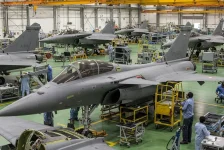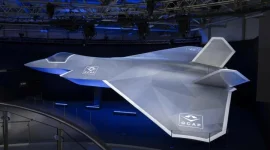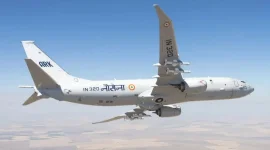- Views: 8K
- Replies: 57
India is reviewing a significant proposal from Russia for the domestic production of the Sukhoi Su-57, a fifth-generation stealth fighter jet. This potential agreement could reshape the long-standing defence relationship between the two countries.
Dmitry Shugaev, Director of Russia's Federal Service for Military-Technical Cooperation (FSMTC), revealed this development at the International Defence Exhibition and Conference (IDEX) 2025 in Abu Dhabi. The proposal falls under India's "Make in India" initiative, which promotes domestic manufacturing.
Shugaev told Sputnik news agency that while India is actively assessing the offer, a final decision is pending. He stressed Russia's willingness to support local manufacturing, potentially at facilities like Hindustan Aeronautics Limited (HAL). HAL has experience building Russian-designed aircraft, including the Su-30MKI.
The Su-57 could be a crucial asset for India, which is looking to modernize its air force in light of increasing tensions with China and Pakistan.
The Indian Air Force (IAF) currently operates a fleet of primarily fourth-generation fighters. This includes Russian Su-30MKIs, French Rafales, and domestically produced Tejas aircraft.
However, it lacks a fifth-generation fighter to rival China's Chengdu J-20 or Pakistan's possible future acquisition of the Shenyang J-35 (a smaller, export-oriented version of the FC-31 Gyrfalcon).
The Su-57, designed to attack both air and ground targets, carry long-range missiles, and evade radar detection, could provide the IAF with 5th-gen air-power capability, potentially at a lower cost than Western alternatives like the Lockheed Martin F-35.
Russia is actively promoting the Su-57 on the international market, highlighting its combat experience in Ukraine. Russian officials, including Shugaev, at IDEX 2025, showcased the jet's adaptability and dependability, presenting it as an aircraft that balances performance and cost-effectiveness.
The offer of local production is especially appealing to India. It would reduce dependence on imports, generate employment, and allow for modifications to suit India's specific operational requirements, including adapting to its varied terrain and climate.
The Su-57 is equipped with advanced features such as supercruise capability (sustained supersonic flight without afterburners), advanced radar systems, and internal weapons bays to reduce radar signature.
Shugaev's comments indicate that Russia is offering more than just a sales agreement. They are proposing a co-production framework that could include technology transfer and joint development. This approach is reminiscent of previous collaborations, such as the earlier Fifth Generation Fighter Aircraft (FGFA) program.
The FGFA program, which aimed to create an Indian-specific variant of the Su-57, was discontinued in 2018. Concerns included cost increases, disagreements over technology sharing, and doubts about the aircraft's performance.
Russia seems to be addressing these past concerns, with officials at IDEX 2025 highlighting a more adaptable and open partnership approach. There are also unconfirmed reports that development of an upgraded Su-57M variant is ongoing, potentially offering even greater capabilities.



